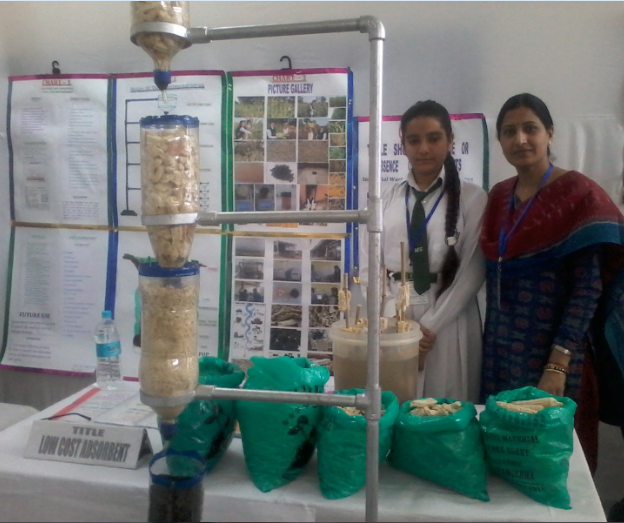Here is what Sripada had to say :
I, Sripada Srisai Lalita Prasida, visited many places during my school days before settling down in the pristine hinterlands of South Odisha. I began my studies in the hilly meadows of Nagaland, then in the Gangetic plains of West Bengal and finally in parts of the Western Ghats that have the distinction of being the secondary centre of origin of rice and the Natural home to more than 50 different aboriginals. Currently, I am living in Damanjodi, famous for the presence of Asia’s largest Bauxite Refinery located in the district of Koraput, Odisha. I am a student of class IX reading in Delhi Public School, Damanjodi. I like to visit nearby villages to observe their lifestyle. They live in harmony with their surroundings by utilizing natural resources, without affecting the ecological web. Their lifestyle revolves around agriculture- in cultivating many varieties of crops. This developed an interest in me to focus on Science to develop something new, related to agriculture. In one of my encounters with a tribal farmer, I came to know about the low utilization of corn cobs, which ignited me to find out some ways to use this agricultural waste. Thus I will pursue a career in Agricultural studies and serve for local people.
Winning the Google Science Fair will boost my insight and help me to work further for solving local problems. The Scientist who created interest in me is Dr. M. S. Swaminathan, the Father of the Green Revolution in India.
Here is a brief summary of her project that got selected in Google Science Fair
LOW COST BIO-ADSORBENT
The by-products of man’s actions have resulted in severe waste burden on Earth. Rapid developments in technology and lifestyle have accelerated the addition of contaminants into air, water and land rendering it unsafe for organisms. Release of pollutants from various sources like domestic, agricultural and industrial sectors has dramatically modified the quality of water thereby causing harm to aquatic organisms. In extreme cases, it can even kill aquatic organisms. Waste water released from domestic households contains several harmful residual substances like detergents, oils, colours, dyes and various salts. Agricultural activities add excessive fertilizers, pesticides and herbicides into the nearby water bodies. Effluents released from industries release toxic chemicals like heavy metals, chemicals(organic or synthetic) to the aquatic ecosystems. The best solution to water pollution is to prevent it from happening. Separation of pollutants at source is the best method to control water pollution. This includes physical, biological and chemical separation to convert the dirty water to clean and usable forms before release.
This study reveals a novel and cheap method of cleaning waste water from domestic and industrial sources by utilizing one of the most under-utilized agricultural wastes. The present study is based on the scientific principles of Adsorption by immobilizing the contaminants with the help of corn cobs. Corn is a major crop plant, every part of which is utilized except the cob. In this project an attempt was made to utilize this less-utilized plant part to clean one of the most precious natural resources, water.
Like Us in Facebook to get more content like this
If you have content to share with us, send us an email at bhubaneswar.buzz@gmail.com

